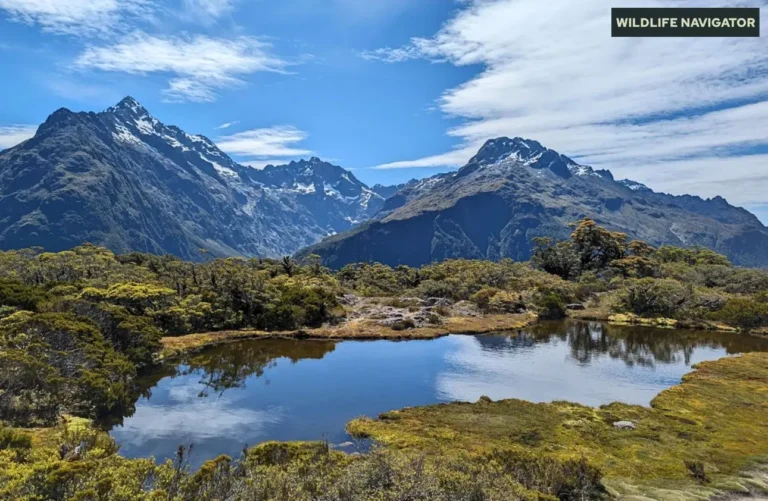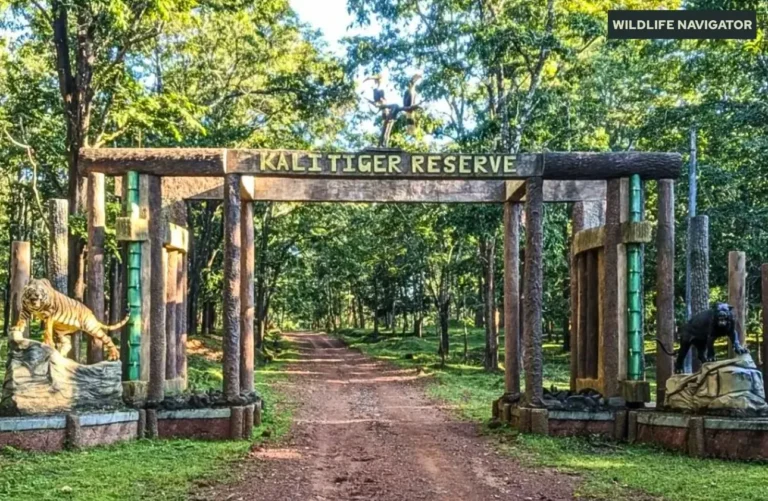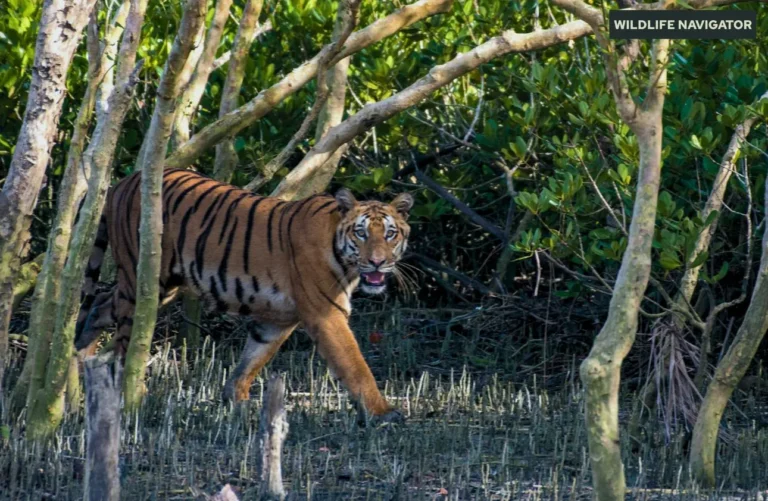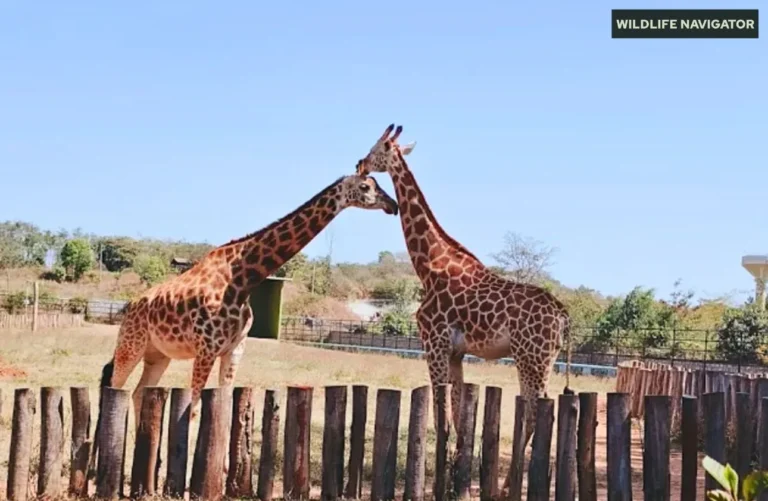Mahananda Wildlife Sanctuary – Darjeeling, West Bengal

Mahananda Wildlife Sanctuary is one of West Bengal’s most biodiverse and scenic protected areas, nestled between the glittering Teesta River and the lush foothills of the Eastern Himalayas. Located on the outskirts of Siliguri, stretching up toward the hills of the Darjeeling district, this sanctuary is a haven for nature lovers, birdwatchers, and wildlife photographers.
Mahananda is special not just for its landscapes but for the role it plays in conservation—it forms an important elephant corridor linking the forests of North Bengal with those of the Northeast and Bhutan. From dense Sal forests in the plains to moist hill forests rising to over 1,000 meters, the sanctuary hosts a stunning blend of species found both in tropical lowlands and Himalayan foothills.
Visitors can expect a mix of quiet riverbeds, cool hill slopes, hidden waterfalls, rich birdlife, and occasional wildlife sightings that make every visit feel fresh and unpredictable. Whether you’re here for birding at Latpanchar, jungle drives from Sukna, or scenic treks through the hills, Mahananda offers a rare combination of accessibility and true wilderness.
History, Establishment & Geographic Setting
Mahananda Wildlife Sanctuary was officially established in 1955 with a clear goal—to protect the rich forest cover of the region and provide safe habitat to elephants, tigers, and other wildlife species threatened by rapid development in the Terai region. Over time, the sanctuary became a crucial part of North Bengal’s conservation landscape, forming a green barrier between expanding cities and the Himalayan foothills.
The sanctuary is managed by the West Bengal Forest Department, which oversees its conservation programs, eco-tourism facilities, patrolling, and research activities.
Covering approximately 159 sq. km, the sanctuary stretches from the plains around Sukna and Siliguri to the hilly slopes near Latpanchar. Its boundaries lie between two major rivers—the Teesta on the west and Mahananda on the east—which feed countless streams, ravines, and wetlands inside the sanctuary.
The terrain is beautifully varied. Visitors encounter tropical moist deciduous forests, sal forests, riverine belts, bamboo groves, and hilly forests that rise sharply as the sanctuary merges with the first folds of the Himalayas. This dramatic shift in elevation—from around 150 meters to nearly 1,300 meters—creates numerous microhabitats, allowing both plains species and Himalayan species to coexist.
The result is a sanctuary with exceptional ecological richness—an area where geography, river systems, and forest types come together to support rare mammals, vibrant birdlife, and an intricate web of flora and fauna.
Climate, Seasons & Best Time to Visit
Mahananda Wildlife Sanctuary enjoys a climate influenced by both Himalayan winds and the moist Terai belt, making its weather patterns quite dynamic.
Summer (March–June)
Summers are warm and humid, with temperatures ranging from 22°C to 35°C. Although afternoons can be hot, early mornings and evenings are still ideal for wildlife viewing. The forests appear lush but dry zones can limit animal movement.
Monsoon (June–September)
Monsoon arrives with heavy rain, turning the sanctuary into a lush green paradise. Streams flood, the forest floor blooms with life, and birds become highly active. However, the sanctuary often remains closed during these months due to safety concerns, slippery terrain, and breeding season for several animals.
Winter (October–February)
Winters are pleasantly cool to chilly, with temperatures dropping to 9°C in higher elevations like Latpanchar. This is the best season for safaris, birdwatching, and trekking. Migratory birds arrive, mammals stay active, and the clear air offers excellent visibility for photography.
Seasonal Highlights
- Best Time to Visit: November to April
- Bird Migration Peak: December–February (Himalayan and winter migrants)
- Flowering Season: Post-monsoon and early winter
- Animal Breeding Seasons: Varies by species, but early winter mornings offer maximum sightings
- Photographers’ Ideal Months: November to February for misty hills, golden sunlight, and active birdlife
With its shifting seasons, Mahananda serves a new experience every few months—making it a place you can return to again and again and still discover something new.
Flora of Mahananda Wildlife Sanctuary
Mahananda Wildlife Sanctuary hosts an outstanding variety of vegetation due to its unique transition from the hot, humid Terai plains to the cool, misty foothills of the Eastern Himalayas. This wide elevation and climatic range allow an extraordinary blend of tropical, sub-tropical, and lower Himalayan flora to thrive within a relatively compact area.
The lower regions are dominated by extensive Sal forests, which form the backbone of the sanctuary’s ecology. These dense stands are accompanied by patches of Sissoo, Khair, and tall grasses that line the riverbanks of Teesta and Mahananda. Thick clusters of bamboo and cane provide essential food and cover for elephants, gaur, and several bird species.
As you move toward higher elevations like Latpanchar and Rangtong, the vegetation gradually shifts into semi-evergreen and moist hill forests. These regions are rich in ferns, climbers, orchids, lichens, and medicinal herbs, creating a cool, shaded environment where Himalayan birds and rare mammals thrive. The presence of moss-covered trees, wild orchids, and dense undergrowth gives these hill forests a mystical, cloud-forest feel.
Overall, the sanctuary’s flora forms a layered, multi-textured ecosystem, supporting everything from elephants and hornbills to frogs, insects, and rare cats.
List of Floral Species in Mahananda Wildlife Sanctuary
Major Tree Species
- Sal (Shorea robusta)
- Khair (Acacia catechu)
- Sissoo (Dalbergia sissoo)
- Teak (Tectona grandis)
- Bahera (Terminalia bellirica)
- Haritaki (Terminalia chebula)
- Amaltas (Cassia fistula)
Hill Forest & Moist Evergreen Species
- Alstonia
- Michelia
- Schima wallichii
- Indian Alder
- Himalayan Cherry
Bamboo & Cane Species
- Bamboo (various forest species)
- Cane brakes (Calamus species)
Shrubs, Herbs & Climbers
- Lantana
- Clerodendrum
- Wild turmeric
- Ginger varieties
- Medicinal herbs (localised hill patches)
Grasses & Riverbank Plants
- Elephant grass
- Vetiver grass
- Cane patches
- Tall Terai grasses along riverbeds
Orchids, Ferns & Special Flora
- Mosses & lichens (common in high humidity zones)
- Ground orchids (seasonal bloom)
- Epiphytic orchids in hill regions
- Tree ferns
Fauna & Habitat Diversity
Mahananda Wildlife Sanctuary is one of North Bengal’s richest wildlife zones, known for its remarkable blend of plains species, Himalayan fauna, and rare forest inhabitants. Its varied habitats—from riverine belts and grasslands to hill forests—create a thriving ecosystem where hundreds of species coexist.
Below is a detailed breakdown of the sanctuary’s wildlife:
Major Habitat Zones
- Riverine Forests: Along Teesta and Mahananda; ideal for deer, elephants, reptiles.
- Moist Deciduous & Sal Forests: Dominant plains habitat with rich herbivore activity.
- Hill Forests (Latpanchar, Rongtong): Cool, misty terrain supporting Himalayan species.
- Grassland & Bamboo Patches: Elephant feeding grounds and bird nesting zones.
- Wetlands & Ravines: Perfect for amphibians, insects, and migratory birds.
Mammals of Mahananda Wildlife Sanctuary
The sanctuary is home to more than 20 species of mammals, including predators, herbivores, primates, and rare Himalayan fauna.
Common & Notable Mammals
- Asian Elephant
- Indian Gaur (Bison)
- Sambar
- Spotted Deer
- Barking Deer
- Wild Boar
- Rhesus Macaque
- Himalayan Langur
- Malayan Giant Squirrel
Predators
- Leopard (Common)
- Jungle Cat
- Leopard Cat
- Marbled Cat (Rare)
Rare & Endangered Species
- Clouded Leopard (one of the sanctuary’s highlights)
- Himalayan Black Bear
- Tiger (occasional sightings from adjoining forests)
- Chinese Pangolin (rare nocturnal species)
These mammals thrive due to the sanctuary’s dense cover, varied elevation, and abundance of freshwater sources.
Birds (300+ species)
Mahananda is a paradise for birdwatchers, especially the hill zone around Latpanchar, known for hornbills and rare Himalayan species.
Key Bird Species
- Rufous-necked Hornbill (flagship species)
- Great Hornbill
- Oriental Pied Hornbill
- Green Magpie
- Scarlet Minivet
- Emerald Dove
- Himalayan Bulbul
- Hill Myna
- Kalij Pheasant
- Blue-throated Barbet
Migratory & Rare Birds
- Swamp Francolin
- Black Baza
- Red-headed Trogon
- Himalayan Cutia
- Eurasian Hobby
- Various migratory waterbirds during winter
Top Birding Spots:
Latpanchar • Gulma • Rangtong • Sukna • Namthing Pokhri
Reptiles & Amphibians
The moist and warm environment supports a rich reptilian population.
Reptile Species
- Indian Rock Python
- King Cobra
- Monocled Cobra
- Common Krait
- Monitor Lizard
- Garden Lizard
Amphibians
- Indian Bullfrog
- Tree Frogs
- Mountain Toads
- Stream Frogs along hill rivulets
Insects, Arachnids & Other Smaller Fauna
Mahananda’s lower and hill forests teem with colourful insects, especially butterflies, during post-monsoon and winter.
Butterflies & Insects
- Blue Mormon
- Common Rose
- Tailed Jay
- Common Jezebel
- Grass Yellow
- Jungle Greenbottle
- Fireflies during humid evenings
Arachnids & Others
- Orb-weaver Spiders
- Jumping Spiders
- Beetles, Dragonflies, Moths
These small creatures play critical ecological roles—pollination, decomposition, pest control, and forming essential links in the forest food chain.
Major Attractions & Activities
Mahananda Wildlife Sanctuary offers a diverse mix of wildlife experiences—from peaceful river trails and scenic viewpoints to birdwatching hotspots hidden deep in the Himalayan foothills. Whether you’re a photographer, trekker, birder, or casual visitor, the sanctuary has something memorable to offer.
Safari Experiences
Though safaris here are more subtle and forest-driven (not like tiger reserves), they offer a raw, quiet form of wildlife exploration.
Jeep Safari (Sukna Range)
The most popular activity, starting from Sukna, takes you through dense Sal forests, riverbeds, and elephant corridors.
Expect sightings of gaur, deer, birds, and occasional leopard tracks.
Walking Trails & Nature Walks
Certain zones between Rongtong and Gulma offer designated walking routes with forest guards, ideal for:
- Birdwatching
- Studying butterflies
- Exploring quiet hill forests
Trekking Routes
Some of the best Himalayan foothill treks in North Bengal originate here:
- Latpanchar – Ahaldara – Namthing Pokhri Trail
- Rongtong – Tindharia Forest Trail
- Sukna – Mahananda Viewpoint Trail
These trails offer sweeping valley views, orchids, and great chances to spot hornbills.
Watchtowers, Viewpoints & Scenic Zones
- Latpanchar: The most famous zone for Rufous-necked Hornbill, Himalayan birds, and cloud-filled morning views.
- Ahaldara Viewpoint: Offers panoramic sunrise views over the Teesta Valley, Kalimpong hills, and even snowy Himalayan peaks on clear days.
- Mahananda Viewpoint: A quieter spot accessed through dense forest roads—perfect for photography and solitude.
Namthing Pokhri (Hill Lake)
A serene seasonal lake known for:
- Himalayan newts
- High butterfly diversity
- Picturesque landscapes
Birdwatching Hotspots
Mahananda is one of India’s premier birding destinations.
Top spots include:
- Latpanchar (Hornbills, Himalayan species)
- Rongtong (warblers, flycatchers)
- Gulma (forest birds)
- Sukna Forest Fringe (woodpeckers, barbets)
- Namthing Pokhri (high-altitude species)
Early mornings (5:30–8:30 AM) are the best for birdwatching.
Visitor Centres & Interpretation Facilities
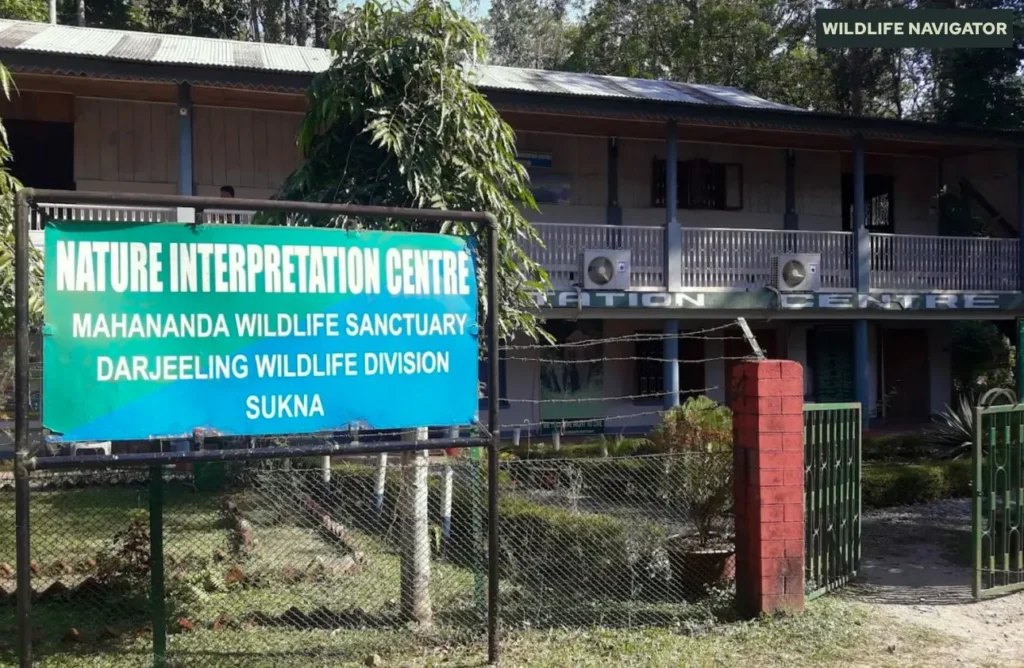
- Nature Interpretation Centre, Sukna
Displays exhibits on local wildlife, forest ecosystems, and conservation efforts. Great for families and school groups. - Latpanchar Community Tourism Centres
Offer local guidance, birding expertise, and village-based eco-tourism experiences.
Special Activities
While Mahananda stays eco-centric and low-impact, certain seasonal activities make visits more immersive:
- Butterfly Watching: Post-monsoon and winter bring colourful swarms—especially around Latpanchar and foothill streams.
- Photography Trails: Early-winter fog, dense forests, and riverbeds create dreamy photography conditions.
- Village Eco-Tourism Stays: Experience local Nepali and Lepcha culture with homestays that support conservation-linked livelihoods.
Accommodation Options
Mahananda Wildlife Sanctuary offers a mix of forest stays, eco-tourism homestays, and private hotels located in and around Siliguri and the nearby hill areas. Whether you prefer a peaceful forest rest house or a birding-centric homestay in Latpanchar, there are options for every type of traveller.
Forest Rest Houses & Government Lodges
Sukna Forest Rest House (Near Siliguri)
A peaceful accommodation option located at the main entry zone of the sanctuary.
- Surrounded by tall Sal trees
- Great for early morning safaris
- Ideal for families and nature explorers
Booking must be done through the West Bengal Forest Department.
Latpanchar Forest Village Stays
Not official forest rest houses but village-based eco-lodges that feel like staying inside the sanctuary’s hill forests.
Perfect for:
- Birdwatchers (especially hornbill lovers)
- Photographers
- Trekkers exploring Ahaldara, Namthing Pokhri
Eco-Tourism Camps & Community Homestays
Latpanchar Homestays
The best area for wildlife lovers wanting close access to birding trails.
Common features:
- Balcony views of misty hills
- Forests right at the doorstep
- Local guides experienced in hornbill spotting
Ahaldara Viewpoint Homestays
Mostly located along ridges with stunning sunrise views over the Himalayan foothills.
Ideal for:
- Landscape photographers
- Nature enthusiasts looking for peaceful stays
Rongtong & Tindharia Village Stays
Great for travellers looking for quiet hill life and forest walks.
Private Resorts, Hotels & Budget Stays (Siliguri Area)
For visitors wanting comfort with easy city access, Siliguri offers good options:
- Mid-range hotels
- Comfortable resorts
- Budget lodges near Sevoke Road
- Premium hotels for families
These stays allow quick access to Sukna Gate, the primary entry point to the sanctuary.
Which Stay Is Best for You?
- For Birdwatchers & Wildlife Photographers
- Latpanchar homestays
- Ahaldara hilltop lodges
(Closest to hornbill habitats, rare birds, and hill forest trails)
- For Families & Casual Travellers
- Sukna Forest Rest House
- Siliguri hotels/resorts
(Easy access + safer travel arrangements)
- For Trekkers & Nature Walk Lovers
- Rongtong / Tindharia village stays
(Quieter trails, scenic hill roads)
- Rongtong / Tindharia village stays
Booking Tips
- Advance booking recommended, especially from October to February.
- Forest rest houses require permission from the Forest Department.
- Homestays fill up fast during long weekends and winter birding season.
- Carry warm clothes if staying in hill zones like Latpanchar (nights can be very cold).
- Confirm road conditions for hill stays during monsoon season.
Suggested Itineraries
1-Day Visit
- Morning safari from Sukna
- Sukna Interpretation Centre
- Quick stop at Gulma or Rongtong for birdwatching
2-Day Exploration Plan
Day 1: Sukna safari + riverbed trails
Day 2: Latpanchar birding + Namthing Pokhri visit
Birding Weekend (2 Nights)
Day 1: Latpanchar birding trail
Day 2: Ahaldara sunrise + Rongtong forest walk
Day 3: Namthing Pokhri + butterfly watching
Best Time to Visit Mahananda Wildlife Sanctuary
Best Time to Visit
- October to April (Peak Season)
Pleasant, dry weather makes wildlife sightings easier—especially elephants, bison, leopards, and bird species. Forest trails remain open and photography conditions are ideal. - December to February (Winter Birding Season)
A paradise for bird enthusiasts. Migratory species like the pied hornbill, wagtails, herons, and various warblers arrive in large numbers. - Avoid Monsoon (June to September)
Heavy rainfall often leads to landslides, slippery trails, and temporary closure of safari routes. Wildlife visibility is also low.
Travel Tips for Mahananda Wildlife Sanctuary
- Entry Permits Required
Obtain permits from the forest check gates at Sukna or Latpanchar. - Safari Timings May Vary
Morning and evening slots depend on weather and forest conditions—check locally before planning. - Choose the Right Zone
- Latpanchar Zone – Best for birdwatching (hornbills, owls, thrushes).
- Sukna Range – Known for elephants, leopards, and dense forest trails.
- Carry Essentials
- Binoculars (a must for birders)
- Comfortable walking shoes
- Light jacket (mornings can be cool)
- Water bottles and snacks
- Insect repellent
- Respect Wildlife Distance
Elephants in this region move unpredictably—maintain distance and never block their path. - Best Style of Visit
Combine a short safari with guided walks in Latpanchar for maximum sightings. - Accommodation Tips
Stay in forest bungalows (if available) or nearby areas such as Siliguri, Sukna, or Latpanchar for easy access.
Conservation Challenges & Management Efforts
Key Conservation Challenges
- Human–Wildlife Conflict
Increasing movement of species like snow leopards and Himalayan black bears toward human settlements causes occasional conflict, especially during harsh winters. - Climate Change & Glacial Retreat
The Gangotri glacier, source of the Ganga, is receding—impacting water availability, vegetation patterns, and wildlife distribution. - Habitat Fragmentation
Pilgrimage routes, road expansion, and tourism activities create pressure on fragile alpine ecosystems. - Poaching & Illegal Collection
Endangered medicinal plants (e.g., Aconitum, Saussurea species) and high-value wildlife parts remain vulnerable.
Management & Conservation Initiatives
- Strict Protection Under the National Park Status
Regulated trekking, zoned access, and limits on camping help preserve sensitive habitats. - Community-Led Conservation
Local communities like the Bhotiya people participate in eco-tourism, anti-poaching monitoring, and habitat protection. - Research & Monitoring Programs
Continuous tracking of snow leopard populations, vegetation changes, and glacial melt. - Promotion of Sustainable Tourism
Trekking permits, waste-management systems, and awareness programs encourage low-impact travel.
Conclusion
Mahananda Wildlife Sanctuary is more than just a protected forest—it is a living tapestry of the Eastern Himalayan foothills, where rivers, hills, and dense forests come together to support an extraordinary array of wildlife. From elephants and leopards to rare hornbills and seasonal migratory birds, the sanctuary offers visitors a unique glimpse into a thriving yet delicate ecosystem.
Its combination of rich biodiversity, scenic landscapes, and accessible eco-tourism experiences makes it an ideal destination for wildlife enthusiasts, photographers, birdwatchers, and nature lovers alike. At the same time, the sanctuary highlights the importance of conservation, community involvement, and sustainable tourism in protecting these fragile habitats for future generations.
Whether you are exploring the forest trails of Latpanchar, watching elephants in the plains, or witnessing the misty hills at sunrise, Mahananda promises an unforgettable journey into the heart of nature, reminding us why preserving such sanctuaries is crucial—not just for wildlife, but for the harmony between humans and the natural world.

